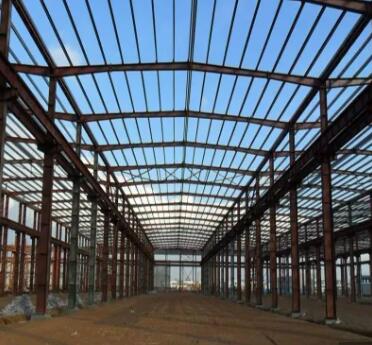Unveiling the Backbone of Engineering: An Exploration of Structural Materials
2024-01-06
Introduction:
In the world of engineering and construction, structural materials serve as the unsung heroes, providing the backbone and stability to countless structures we encounter daily. From towering skyscrapers to intricate bridges, the selection and application of structural materials play a pivotal role in shaping the modern built environment. In this blog post, we embark on a journey to understand what structural materials are, their significance, and the crucial role they play in the field of engineering.
Defining Structural Materials:
At its essence, structural materials refer to a broad category of materials specifically chosen and designed for use in constructing load-bearing elements of buildings, bridges, machines, and other structures. These materials are selected based on their unique properties, durability, and ability to withstand various loads and environmental conditions.
Key Properties of Structural Materials:
1. Strength:
- The primary characteristic defining structural materials is strength. These materials must possess the strength to support and carry loads without undergoing significant deformation or failure.
2. Elasticity:
- Elasticity is crucial for materials to return to their original shape after experiencing external forces. This property ensures that structures maintain their form under different conditions.
3. Ductility:
- Ductility represents the ability of a material to deform without breaking. Structural materials with sufficient ductility can withstand substantial deformation before failure.
4. Hardness:
- Hardness is a measure of a material's resistance to wear and abrasion. Structural materials with appropriate hardness resist wear and maintain their integrity over time.
5. Corrosion Resistance:
- Given the variety of environmental conditions structures may face, corrosion resistance is vital. Structural materials must withstand exposure to moisture, chemicals, and other corrosive agents.
6. Temperature Stability:
- The ability to withstand a range of temperatures without significant degradation is crucial. Structural materials must maintain their strength and stability across diverse climates.
Types of Structural Materials:
1. Metals:
- Metals such as steel and aluminum are prevalent structural materials due to their high strength, durability, and versatility.
2. Concrete:
- Concrete is widely used in construction for its excellent compressive strength. It is a composite material made from cement, aggregates, and water.
3. Wood:
- Timber and wood products are employed in various construction projects, offering a combination of strength, versatility, and sustainability.
4. Composites:
- Composite materials, like fiberglass and carbon fiber composites, provide a balance of strength, lightness, and resistance to corrosion.
5. Polymers:
- Polymers, including plastics, play a role in structural applications where lightweight and corrosion resistance are prioritized.
Significance of Structural Materials:
1. Safety:
- The choice of appropriate structural materials directly impacts the safety and stability of structures. Reliable materials ensure the longevity of a structure and reduce the risk of failure.
2. Durability:
- Structural materials must withstand the test of time, resisting environmental factors and maintaining their integrity over the years.
3. Innovation:
- Advances in structural materials drive innovation in engineering and construction, enabling the creation of more efficient, sustainable, and aesthetically pleasing structures.
4. Efficiency:
- The efficiency of structures relies on the judicious use of materials, balancing strength with weight and ensuring cost-effective construction.
5. Sustainability:
- As sustainability becomes a central concern, the development of eco-friendly structural materials is gaining prominence, contributing to greener and more responsible construction practices.
Conclusion:
In the vast landscape of engineering and construction, structural materials serve as the silent architects of our modern world. Their selection, properties, and application influence the safety, efficiency, and sustainability of the structures that shape our daily lives. Understanding the significance of structural materials unveils the intricate balance between strength, durability, and innovation that propels the field of engineering forward. As we continue to push the boundaries of what is possible in construction, the role of structural materials remains central to the realization of structures that stand the test of time.



